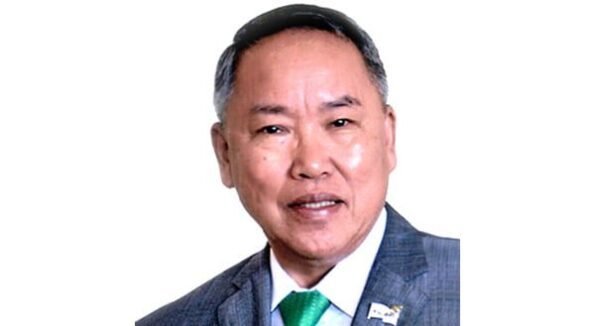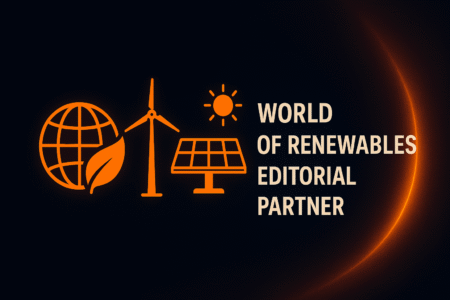About Victorino Salveleon Bala
Victorino Salvaleon Bala is the Secretary in Charge of the ASEAN Council on Petroleum (ASCOPE). His concurrent functions include Director/President & CEO of PNOC Renewables Corporation and Head of Energy Research Department of PNOC. Prior to his current post, Bala was the Project Manager for PNOC renewables projects such as the PNOC solar homes system distribution project which won the international award – the 2003 Energy Globe award for Solar Energy project in Linz, Austria – the 1st in the Philippines and in Asia. He also received 2004 NGV Champion Award given in NGV forum in Buenos Aires, Argentina. He was also involved in energy projects such as hydropower, biomass, fuel cell development and waste-to-energy.
(Source: SIEW 2013)
1.Singapore recently hosted the 77th ASCOPE National Committee and Associated Meetings in May 2014. Could you share some of the key outcomes of the discussions, and how ASCOPE’s work contributes to developing the oil and gas industry in Southeast Asia?
ASCOPE has been an excellent platform where cooperation and networking has been institutionalized and become an effective instrument in forming a number of bilateral cooperation, joint venture undertakings, knowledge sharing and technical assistance and cooperation between and among Member Countries. At the 77th ASCOPE National Committee & Associated Meetings held in Singapore, discussions were centred on how to further strengthen the synergies on these collaborations to promote energy security.
Deliberations on the Trans-ASEAN Gas Pipeline (TAGP) project and the necessary procedures, plans of action, and required infrastructure for the operationalisation of the Coordinated Emergency Response Measures (CERM) Mechanism under the ASEAN Petroleum Security Agreement (APSA) were some of the key highlights of the meetings, among others.
ASCOPE always believes in synergy and cooperation in developing a strong ASEAN, in particular in strengthening its oil and gas industry. Thus, ASCOPE will continue to pursue its collaborative works and studies on TAGP, APSA, joint venture, technical assistance and other bilateral arrangements to advance the development of the oil and gas industry in the region.
2.The Trans-ASEAN Gas Pipeline (TAGP) is one of ASEAN’s flagship connectivity projects. What progress is expected in the lead-up to the ASEAN Economic Community in 2015?
With the adoption of the Trans-ASEAN Gas Pipeline’s (TAGP) new strategic focus, i.e. moving gas supplies to demand centres irrespective of the “means” to satisfy domestic requirements will serve as a springboard to advance the realization of the project. This means that ASCOPE will not only pursue infrastructural development for gas pipeline connections to transport gas, it will also develop the necessary infrastructures, e.g. receiving gas terminals and transports for LNG, among others. This progress, I believe, embodies the goal of the ASEAN Economic Community, which is to enable and reinforce ASEAN connectivity and energy supply security.
In line with this focus, ASCOPE is now rolling out a number of collaborative works and initiatives to advance the development of LNG in the region. Some of which include the studies being conducted on LNG destination flexibility, harmonization of LNG specifications, ship-shore compatibility and other regional technical support necessary to facilitate LNG developments.
Operations of the following Regasification Terminals (RGTs): a) Map Ta Phut LNG Receiving Terminal in Thailand, b) Floating Storage Regasification Unit (FSRU) in West Java, Indonesia, c) Singapore LNG Terminal, and d) RGT Sungai Udang in Malaysia have also commenced.
Furthermore, it is also worthwhile to note that with the completion of Zawtika Project (Block M-9) in Myanmar in May 2014 (connecting and delivering gas to Thailand), TAGP now comprises 12 interconnecting pipelines projects. This brings the total pipeline connections for the project to 3,377 km.
Development of the draft MOU on Gas Transit Cooperation is also ongoing. The draft MOU is scheduled to be presented in the next Senior Officials Meeting on Energy (SOME) in September 2014.
Also underway are further studies on legal issues relating to multilateral LNG contracts focusing on destination restrictions and diversions, quantity flexibility, LNG specifications, and shipping and receiving facilities as basis for ASEAN Member States to develop general terms and conditions.
3.Natural gas is one of the cleanest fossil fuels, but prices are currently very expensive due to the “Asian Gas Premium”. How do you see the unconventional gas boom in the United States impacting the price of gas in Asia? What can ASEAN do to facilitate the usage and trade of gas in the region?
The shifting of the gas boom to Asia is an opportunity and a great challenge to suppliers and buyers. The flexibility of suppliers and their destination clauses would be beneficial to both parties, especially on the gas price, i.e. contracted and negotiated based on oil indexation or Henry Hub). There is truth to the IEA pronouncement that you can export gas but not the price. While US Henry Hub is relatively low, if not reasonable, its transport to Asia would mean a different price altogether, though this would still be lower than the prevailing “ASEAN Gas Premium”. Japan and Korea’s demand is projected to slow down due to its energy efficiency programs. This could affect its imports and future demands, and subsequently prices.
ASEAN appetite for more gas has triggered a lot of diversion and destination from Europe and North America, with Asia seen as being a profitable market at a good price.
ASEAN can make use of its expertise and experience on LNG/NG trade. Indonesia, Malaysia and Brunei have a long history of LNG trade with other ASEAN countries and have been very successful bilaterally.
While these emerging markets are being developed, capabilities and capacities of other ASEAN Member Countries can be consolidated and merged. This, I believe, can demand or command better trading mechanism and leveraging through an ASEAN Joint procurement system.
An ASEAN hub can develop and establish an ASEAN LNG price index which may or may not be based on oil but on its unique trading characteristics and trading culture. In Canada, they have an Alberta Energy Company (AECO) pricing that works well and synergizes with Henry Hub. The ASEAN Gas Hub pricing can be competitive and supportive to the ASEAN needs. This could be a hybrid of sorts or a “synergized pricing mechanism” that will promote and develop ASEAN aspirations.
While Singapore was initially identified as the strategic location for the ASEAN/Asian LNG Hub, it can now step up to a bigger role in ASEAN in developing and designing a formula for this purpose.
4.Changes in fossil fuel prices tend to influence the mix of energy sources used and coal currently has the lowest generation costs among fossil fuels. How can coal compete with gas as the fuel of choice for Southeast Asia, and what measures could be taken to address sustainability issues for the energy industry?
Developmental works and regional initiatives have long begun on gas development and in the long term, I believe this will still be the fuel of choice for Southeast Asia. For ASCOPE in particular, this is evident in the on-going implementation of the TAGP project (now with its new strategic focus on LNG) which can be traced back to when ASEAN Energy Ministers tasked ASCOPE to undertake the project during the 17th ASEAN Ministers on Energy Meeting in Thailand on July 3, 1999.
Under the project’s umbrella, 12 bilateral gas pipeline connections have already been established as of May 2014 and a number of RGT and FSRUs are also operational, with more to come.
However, I also believe coal can compete with gas. There is certainty on the promising future of coal.
Coal is the world’s most abundant fossil fuel and as coal prices continues to be competitive, demand for coal will to grow. Based on the IEA Medium Term Coal Report 2013, demand for coal will grow at an average rate of 2.3% per year through 2018. China will account for nearly 60% of new global demand for coal for the next five years and increasing consumption is expected from countries in Southeast Asia.
While gas is competitive, the cost to harness and develop necessary infrastructure is becoming more challenging. Coal has also an advantage over gas as coal-fired plants can be easily integrated into existing power plants and emerging technologies are paving the way for the conversion of coal to liquid fuels and synthetic natural gas.
If coal development projects continue to be competitive in terms of cost, and with technology paving the way to make it more environmentally-friendly, then coal has a good chance of becoming the fuel choice for the region in the coming years.
Governments should collaborate to form regional policies that facilitate and support the development of coal, as it is a dominant part of Asia’s energy mix, yet its sustainability remains unseen.
5.The Philippines has an ambitious plan for ramping up renewable energy in its energy mix. Against this backdrop, how do you see the role of fossil fuels in the Philippines, in particular oil and gas, evolving within the next 10 years?
With its vast renewable energy resources, the Philippines will definitely harness these to ramp up renewable energy in its energy mix. As the world’s second largest producer of geothermal power, the country will continue to strengthen its commitment to geothermal and seize equal development opportunities for other renewable energy resources such as wind and hydropower, with the goal of increasing the country’s energy self-sufficiency.
At the same time, given the country’s growing demand for energy, oil and gas will continue to play a vital role to support the country’s economic growth. The Philippine Department of Energy has awarded a number of service contracts on oil and gas and robust drilling, with seismic studies to assess the sites’ commerciality currently being conducted.
Having said this, while we’re optimistic to see a new landscape for oil and gas developments in the country, I also believe the Philippines is on the “adoptive mode” with the emergence of new technologies for gas transportation and storage, as well as the increasingly competitive LNG prices.
Henceforth, I believe, the Philippines will not only ramp up renewable energy in its energy mix but will also equally press on to advance exploration and development of oil and gas in the country.








